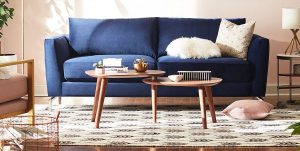
Looking for a safe, comfortable mattress for the baby can be a little precarious. Before one hits the sheet path at the neighborhood baby superstore, take a minute to peruse these support buying tips on choosing a baby mattress.
Choose a firm mattress
While a mattress with lots of support may seem awkward, a firm setting is vital to the baby’s safety. As indicated by the Consumer Product Safety Commission, delicate resting surfaces pose a suffocation hazard for infants and increase the danger of SIDS (Unexpected Newborn Death Condition). Never put the baby to rest on an adult mattress or some other delicate surface. If one is stressed from the child’s prolonged comfort, settle into a double-sided mattress. Designed for use on newborn children, one side must be extremely firm. The opposite side is softer and better suited for use on a baby bed.

Search Mattress Options
There are a few distinct types of affordable mattresses, including foam, inner springs, and natural models. Let go of the effort to find out what the advantages and possible problems are with each of the three so that one can decide what one feels good about. A growing number of scientists and clinical experts argue that synthetic compounds left over from the assembly system of numerous normal familiar things can exasperate existing diseases and even justify new and possibly dangerous medical conditions. With any karma, the little visionary will spend the better part of his days dozing in his bunk. So, if one wants to create a substance-free climate for the child, a natural mattress may be the best place to start.
Choose the right size mattress
To be protected, the child’s mattress must be ideal for accommodation. There should be nearly two fingers of space between the side of the mattress and the contour of the housing. If it’s older, the baby can get caught between the two, potentially causing injury or suffocation. Although most bunk beds use a standard-size mattress, the size can change. Before purchasing a mattress, make sure one has specific estimates for the accommodation. Mattress openings take into account the expanded wind flow and make it easier to get around moisture, preventing mold, build-up, and smell. When choosing the mattress, look for small openings built into the edges.
Invest in the money for a quality mattress
A quality mattress should see the child in their “big bed” and days pass without problems. Baby mattresses can be expensive, costing up to $300 or more, but on the off chance one’s trying to save a few bucks, one’s in an ideal situation to cut back on other items.








